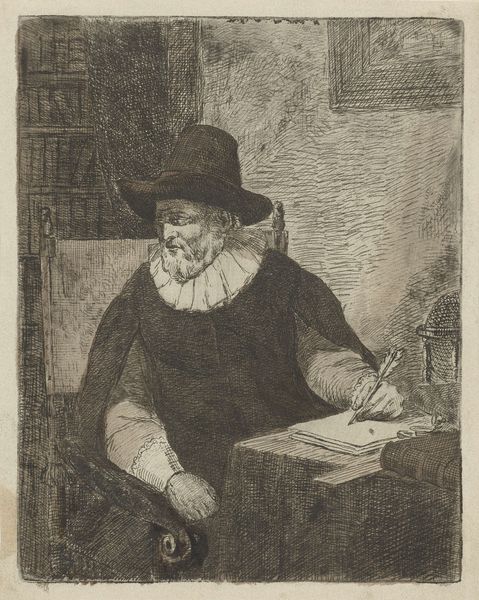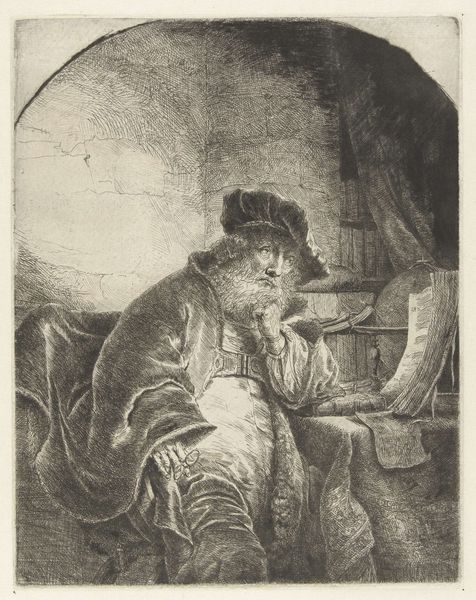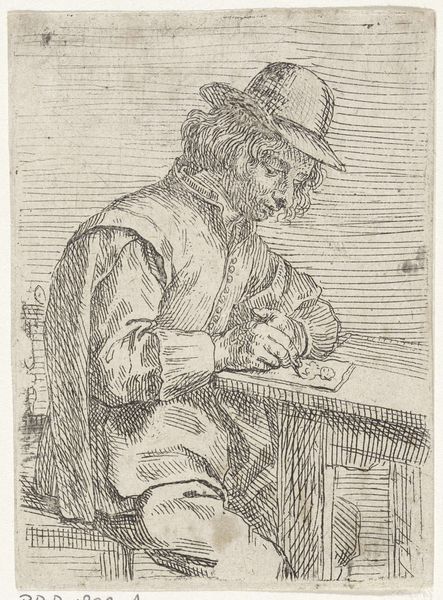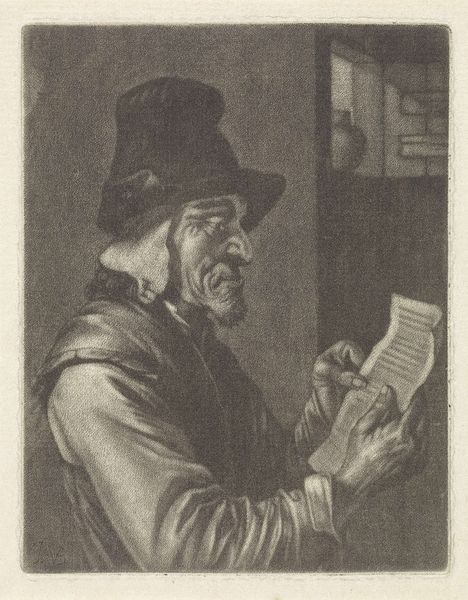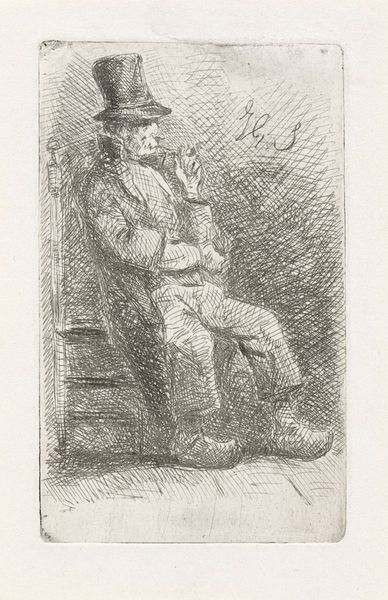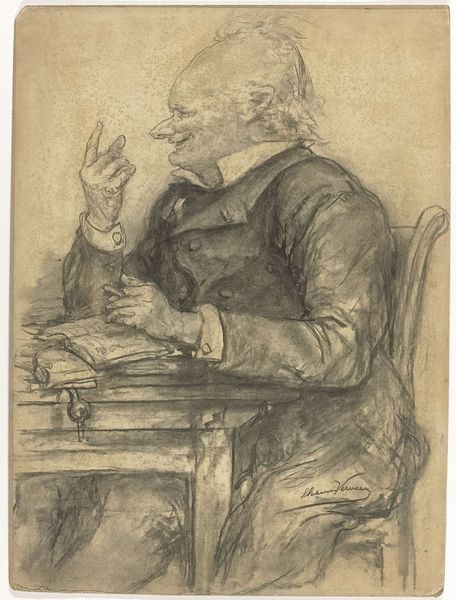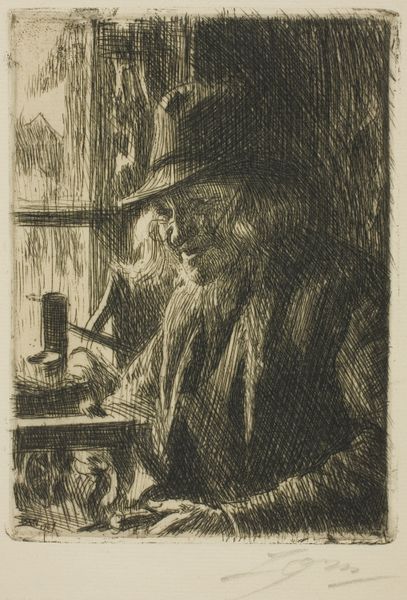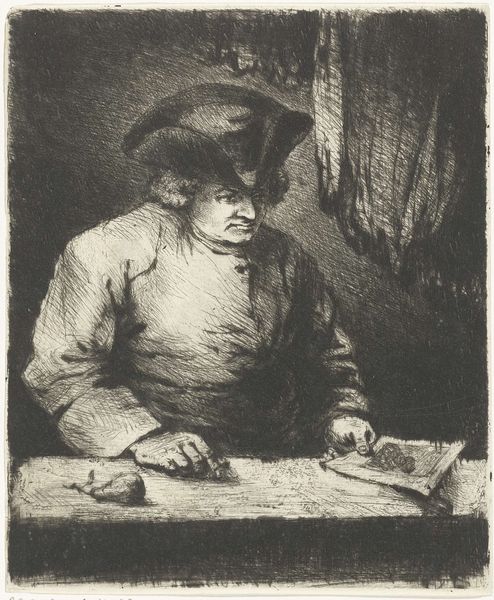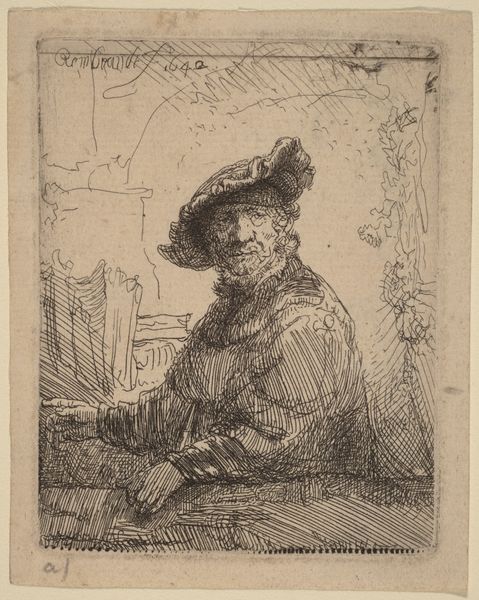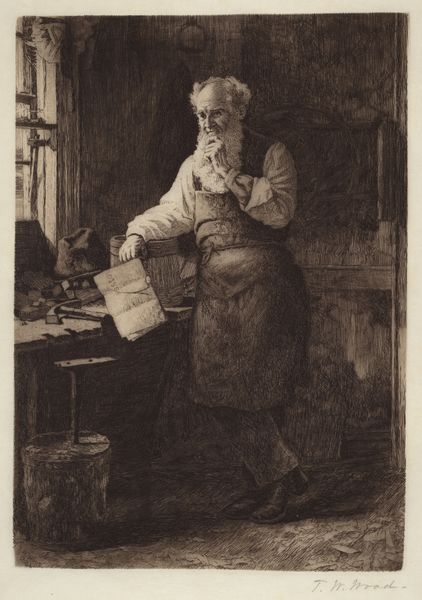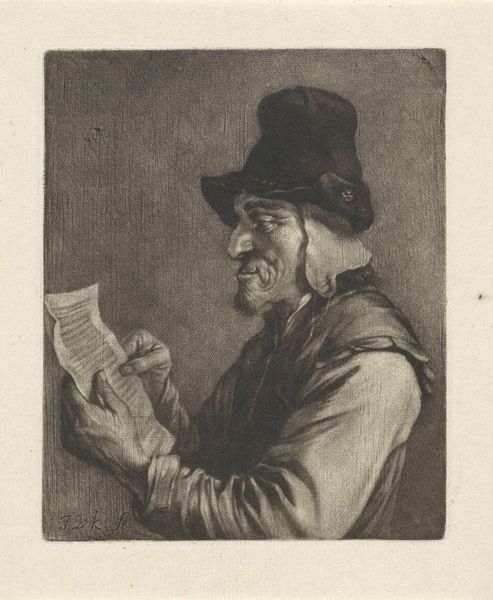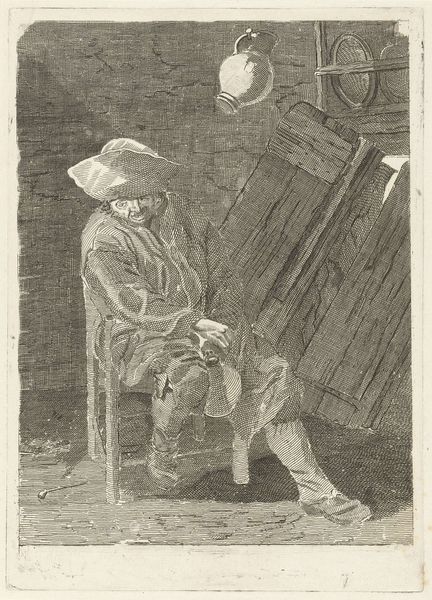
drawing, ink, pen
#
portrait
#
drawing
#
pen sketch
#
pencil sketch
#
ink
#
romanticism
#
pen
#
genre-painting
#
realism
Dimensions: height 131 mm, width 102 mm
Copyright: Rijks Museum: Open Domain
Curator: Today we're looking at "Man in een studeerkamer," or "Man in a Study," a pen and ink drawing by David van der Kellen, created sometime between 1814 and 1859. It’s currently housed here at the Rijksmuseum. Editor: The first impression is one of quiet concentration. There's something quite stark in the tonal range and intense linearity. The texture of the paper feels implied, despite it being an image *on* paper! Curator: Absolutely. Van der Kellen's control of line is remarkable. Notice how the density and direction of the hatching define the forms, creating volume and shadow? Observe the cross-hatching in the background, the rendering of light reflecting on the hat, versus the gentle stroke marking the wall. The structural integrity emerges from a clear sense of planes and angles. Editor: For me, it's about what this scene represents. This man at his desk evokes the Renaissance ideal of scholarship. Writing was deeply symbolic then—tied to law, religion, and intellectual authority. The image transmits power, the quill becomes an instrument of knowledge. Curator: I appreciate your point about the quill. It’s the sole point of true sharpness in the image, where line transforms to edge, literally making a point. And that detail echoes what one would expect for art of the early nineteenth century. The genre style gives the whole composition an ordered appearance, with the quill poised just above paper as the absolute center. Editor: Precisely. The caped shoulder and wide collar suggest civic importance, while his focused gaze speaks to inner contemplation, a sense of reflection on the weight of words. The books behind him suggest a wellspring of wisdom—access to the thoughts of great minds. It also suggests the historical continuities within Dutch culture, connecting it back through centuries to figures like Erasmus. Curator: It seems van der Kellen aimed for an analytical rendering, but not quite an objective one. I feel a trace of the artist’s emotional investment too, perhaps a reverence for scholarship itself. Editor: Perhaps you're right, and on my end, this work sparks something deeper than admiration for the act of scholarship—it reminds us that written works will live on, their importance perhaps yet unknown, continuing to affect individuals throughout the generations.
Comments
No comments
Be the first to comment and join the conversation on the ultimate creative platform.
